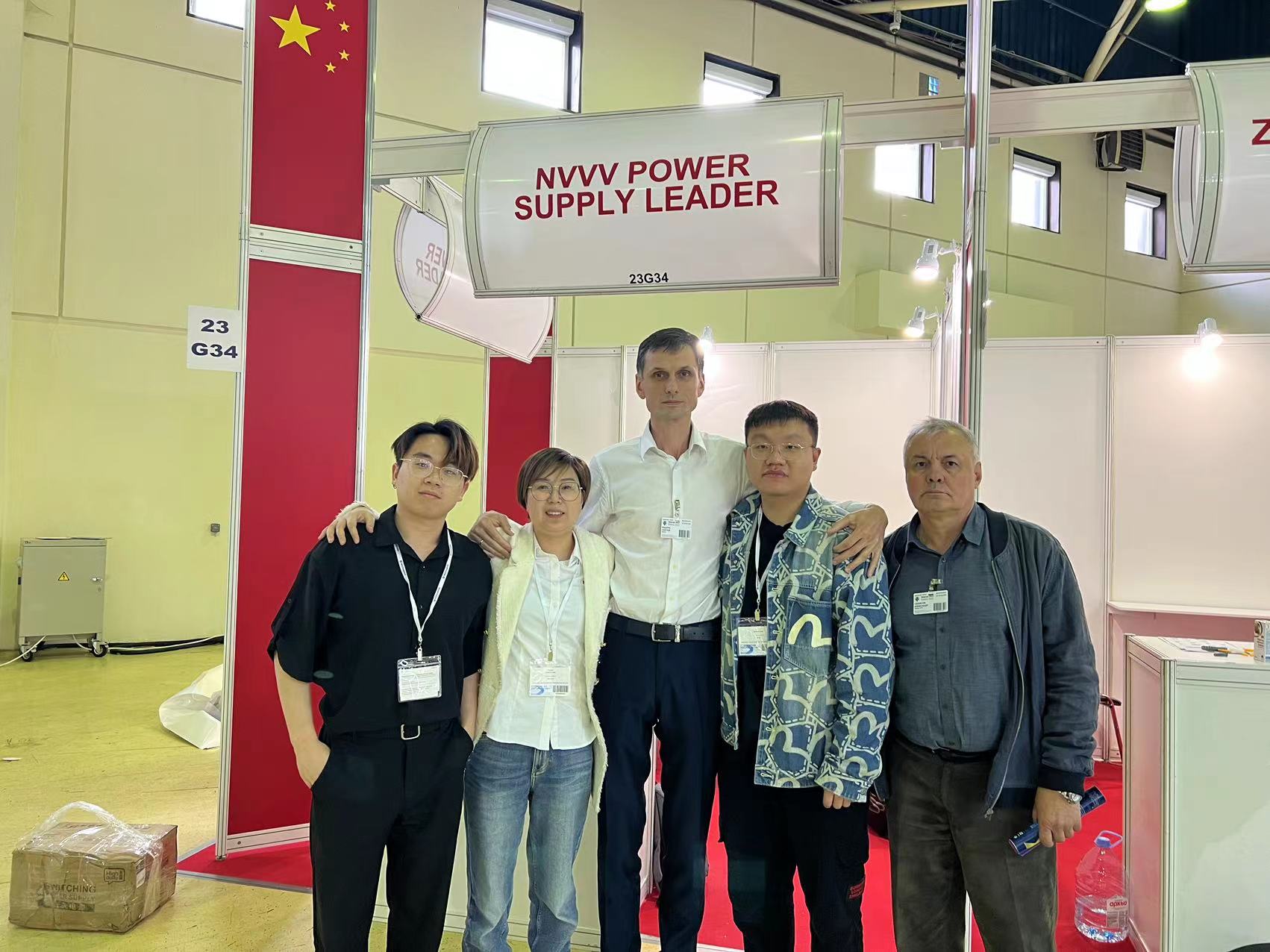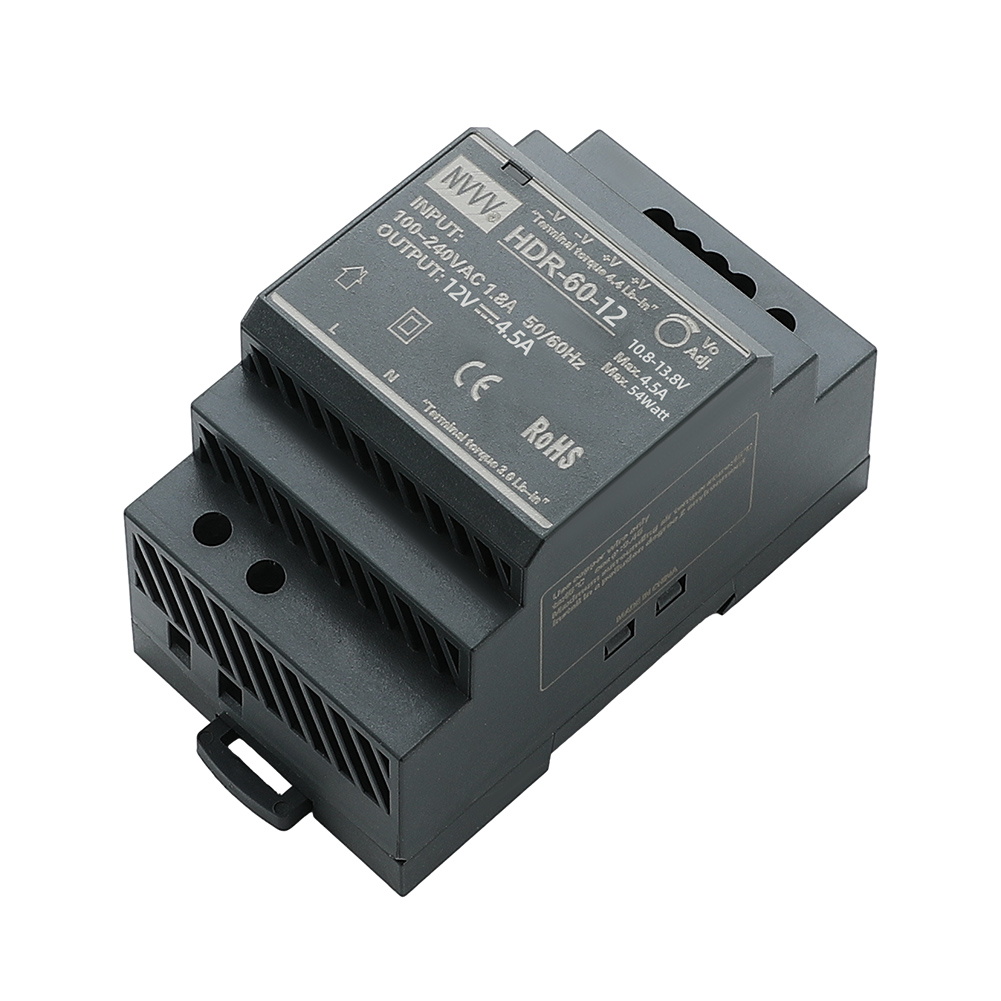A Complete Guide to Switching Mode Power Supply (SMPS): Applications, Types, and Selection Tips
In today's increasingly digital and energy-conscious world, the demand for efficient, compact, and reliable power conversion systems has grown rapidly. One technology that stands out in meeting these demands is the Switching Mode Power Supply (SMPS). Known for its high efficiency, lightweight design, and broad adaptability, SMPS has become a backbone in industrial automation, smart electronics, and renewable energy systems. This guide addresses some of the most frequently asked questions surrounding SMPS, offering practical insights into how it works, how it differs from traditional solutions, and what to consider when selecting one for your next project.
Table of Contents
What Is SMPS and Why Is It Widely Used in Modern Electronics?
How Does SMPS Differ from Linear Power Supplies?
What Are the Main Types of SMPS and Their Use Cases?
Why Should Engineers Consider SMPS in Their Design Choices?
What Are the Key Considerations When Selecting an SMPS?
What Is SMPS and Why Is It Widely Used in Modern Electronics?
Definition and Core Function
SMPS (Switching Mode Power Supply) refers to a type of power supply that uses high-frequency switching transistors and pulse-width modulation (PWM) techniques to efficiently convert electrical energy. Unlike traditional power supplies that rely on resistive or linear voltage regulation—which leads to considerable energy loss—SMPS uses semiconductor switches that rapidly turn on and off, thereby reducing power wastage and improving conversion efficiency. These fast-switching cycles, combined with filtering stages, allow SMPS to maintain a stable output voltage even when input conditions fluctuate.
This efficiency is particularly crucial in modern electronics where compact size, heat reduction, and energy savings are prioritized. The design eliminates the need for large transformers and heat sinks, resulting in smaller and lighter devices.
Application Across Industries
SMPS is not limited to one sector—it is deeply integrated into a variety of fields such as automation control systems, medical instrumentation, telecom equipment, and consumer devices like televisions and computer monitors. In industrial automation, SMPS provides consistent power to programmable logic controllers (PLCs), sensors, and actuators. In telecommunications, it ensures the uninterrupted operation of routers and base stations.
Thanks to its versatility, SMPS is also essential in battery-operated and solar-powered systems where energy optimization and stability are critical. Its ability to handle both AC and DC inputs further enhances its adaptability.
Efficiency and Thermal Benefits
One of the most celebrated features of SMPS is its exceptional efficiency, often reaching 85% to 95%. This means less power is converted into heat, allowing devices to run cooler. Cooler operation reduces thermal stress on internal components, ultimately leading to improved reliability and extended product lifespans.
Additionally, the reduction in heat generation simplifies cooling requirements. In many cases, passive cooling (such as natural convection) is sufficient, eliminating the need for noisy and power-consuming fans. This is particularly advantageous in sealed enclosures or fanless applications, commonly found in cleanroom environments or outdoor installations.
How Does SMPS Differ from Linear Power Supplies?
Key Technical Differences
At the heart of the difference between SMPS and linear power supplies is how voltage regulation is achieved. Linear power supplies regulate voltage by dissipating excess energy as heat through resistive components—usually a series pass transistor and voltage reference circuit. This process is straightforward but inefficient, especially when the input voltage is much higher than the required output.
In contrast, SMPS utilizes high-speed switching elements, typically MOSFETs or IGBTs, and stores energy in magnetic components like inductors or transformers. These components allow the device to transfer energy in pulses, which are then smoothed into a stable DC or AC output using capacitors and control circuits. This method not only preserves energy but also allows for compact, lightweight designs.
Performance Comparison
The practical outcomes of these differences are significant:
Efficiency: SMPS often achieves up to 95% efficiency due to minimized heat loss, while linear supplies typically stay below 65%. This efficiency translates to energy savings over time, which is critical in large-scale industrial operations.
Size and Weight: Because SMPS operates at higher frequencies (typically 20 kHz–1 MHz), it requires much smaller transformers and capacitors compared to the bulky components used in linear power supplies. The result is a more compact and lightweight unit—ideal for equipment with space constraints.
Thermal Management: SMPS generates far less heat, which simplifies cooling system requirements. Linear power supplies often need heat sinks or active cooling to prevent overheating, especially under heavy loads.
Input Flexibility: SMPS can accept a wider input voltage range and adapt more easily to voltage fluctuations, making them suitable for global power grids and renewable energy systems where voltage levels may be inconsistent.
Operational Noise and EMI
It is worth noting that SMPS may introduce electromagnetic interference (EMI) due to the high-frequency switching. However, modern designs include EMI filters and shielding that minimize these effects. Linear power supplies are inherently quieter in terms of EMI but are generally reserved for applications where noise sensitivity outweighs size and efficiency concerns.
What Are the Main Types of SMPS and Their Use Cases?
Classification by Output
Switched Mode Power Supplies can be categorized based on their input-output configurations, which determine their suitability for different applications:
AC to DC SMPS: This is the most common type, converting standard mains AC power to a regulated DC output. It is widely used in industrial control systems, consumer electronics, and LED drivers. For instance, a 24V DC SMPS might power a PLC system in a factory or an array of sensors in an HVAC controller.
DC to DC SMPS: This type adjusts voltage levels within DC systems, either stepping up or stepping down as required. It's vital in solar energy systems, electric vehicles, and battery-powered industrial tools. These converters ensure optimal voltage is supplied to various subsystems, improving energy efficiency and stability.
AC to AC / DC to AC Converters: Less common and often specialized, these configurations include inverters and frequency converters. They are typically used in applications requiring different frequency outputs or backup power setups such as UPS (Uninterruptible Power Supplies).
Each type is designed to fulfill distinct requirements, and choosing the correct configuration is essential for maintaining system integrity and efficiency.
Topologies
Beyond input-output types, SMPS also varies by internal topology—the specific method used to transfer and regulate power:
Buck Converter: Also known as a step-down converter, this topology lowers the input voltage to a lower output voltage. It is used in embedded electronics, mobile devices, and automation modules where precise, low-voltage power is needed.
Boost Converter: In contrast, the boost converter increases voltage from a lower input level. It's commonly used in LED backlighting, power factor correction, and applications where compact battery systems must deliver higher voltages.
Flyback Converter: A popular isolated topology for low-to-medium power applications. It provides galvanic isolation and is widely seen in compact chargers, small industrial devices, and safety-critical systems.
Forward Converter: Similar to the flyback but better suited for higher power ranges and improved efficiency. It's used in motor control systems, security equipment, and mid-range server power supplies.
Each topology has trade-offs in complexity, cost, and performance, making it crucial to select based on load type, safety requirements, and space constraints.
Why Should Engineers Consider SMPS in Their Design Choices?
Design Flexibility
One of the standout reasons engineers prefer SMPS in new designs is its high degree of adaptability. SMPS units are available in a wide range of configurations, allowing precise control over output voltage, current limits, and power ratings. Most units come with adjustable trimmers or digital interfaces to fine-tune output values, making them ideal for both prototyping and final deployment.
Whether you're designing for automation systems, telecommunications, or instrumentation panels, SMPS modules can be selected to match specific input ranges, output profiles, and safety requirements. Modular options also allow hot-swapping or system expansion without overhauling the entire power infrastructure—a key benefit in scalable projects.
Regulatory Compliance
Modern industrial systems are subject to strict international standards covering electromagnetic compatibility (EMC), electrical safety, and environmental directives. SMPS manufacturers commonly design their products to meet requirements like CE, ROHS, FCC, and LVD. This ensures that integrating such units into larger systems won't result in compliance issues during inspections or export.
For example, EMC-compliant SMPS reduces the risk of interference with sensitive analog circuits or communication modules, which is crucial in environments with mixed-signal systems. Additionally, ROHS-compliant designs meet environmental mandates for reducing hazardous substances, which supports corporate sustainability efforts.
Cost-to-Benefit Ratio
While switching power supply may initially appear more expensive than linear alternatives, its long-term economic advantage is undeniable. The improved energy efficiency reduces electricity bills, especially in power-hungry environments like data centers, production lines, or retail lighting systems. Less heat also means less maintenance on fans or cooling systems, and extended device life reduces the frequency of replacement cycles.
Moreover, the reduced size and weight of SMPS modules can lower shipping and handling costs, and make them easier to integrate in tight control panels or wall-mounted enclosures. In essence, engineers gain more power with fewer resources—an increasingly important consideration in sustainable design and lean manufacturing environments.
What Are the Key Considerations When Selecting an SMPS?
Load Requirement Matching
Choosing the right SMPS starts with understanding your system's load profile. It's essential to calculate the maximum current your devices may draw and then select an SMPS with at least a 20% headroom above this value. This margin ensures stable operation under startup surges or peak loads and reduces stress on internal components, ultimately extending the power supply's lifespan.
In multi-load systems, it's also important to consider how the power is distributed. For example, an SMPS with multiple isolated outputs can serve control logic, communication boards, and actuators independently—helping to isolate faults and simplify diagnostics.
Environmental and Mounting Conditions
Environmental factors play a crucial role in SMPS performance and longevity. Always check the operating temperature range specified by the manufacturer and ensure the supply is rated accordingly, especially for installations in hot industrial cabinets or outdoor enclosures.
IP Ratings: Look for models with a high Ingress Protection (IP) rating if the supply will be exposed to dust, moisture, or chemicals. For example, IP67-rated SMPS are suitable for outdoor or wash-down environments.
Form Factor Options: SMPS come in various mounting styles—such as DIN rail, panel mount, and open-frame. Choose a format that fits your panel layout and allows adequate airflow or cooling.
Vibration Resistance: In mobile or industrial applications such as conveyors or vehicles, vibration-tested SMPS models offer improved reliability through reinforced solder joints and secured components.
Protection Features
Safety is non-negotiable when working with electrical systems. Quality SMPS units incorporate multiple protection mechanisms to safeguard both themselves and the connected loads:
Overload Protection: Prevents overheating or damage during current spikes.
Overvoltage Protection: Shields sensitive electronics from output surges.
Short Circuit Protection: Automatically shuts down the output to prevent failure.
Thermal Shutdown: Cuts power if internal temperatures exceed safe limits.
Some advanced models also support remote monitoring and diagnostic feedback, allowing for predictive maintenance and minimal downtime in mission-critical applications.
Conclusion
Switch Mode Power Supplies are more than just a modern alternative to traditional power converters—they are a strategic choice for engineers aiming to design smarter, more efficient systems. Whether you're integrating into an industrial control cabinet, supporting telecom infrastructure, or building an energy-conscious consumer device, SMPS offers unmatched flexibility, performance, and reliability. By understanding its types, advantages, and selection criteria, engineers and technical buyers can make more informed decisions that enhance system longevity and reduce operational costs.










